Decoding Stanton Drew
The Great Stone Circle in Context
Stanton Drew, hidden among the low, green hills of the Chew Valley south of Bristol, is Britain’s second largest stone circle (after Avebury). But despite retaining most of its enormous megaliths (dispersed over three separate circles), the site has never really captured my imagination. I don’t know why. But I’ve never been able to work it out. The location, next to a stream much depleted by a dam upriver, has always struck me as a bit underwhelming, even if the stones themselves cast an undeniably powerful spell.
I’d been guilty of ignoring the place for years (in part because the landowner doesn’t like people flying drones over it). But yesterday, a fellow Mendip prehistory nut and I revisited Stanton to walk the adjacent river and valley. I had a hunch the experience would throw up a few insights, and it certainly did.
It was obvious straightaway that the River Chew, whose higher level in Neolithic times meant its waters would originally have risen to just metres from the megaliths, was the raison d’être of the place. The largest of Stanton’s trio of circles, comprising stones made mostly from huge chunks of gnarled, nobbly, lichen-covered rock, sits on an area of raised land overlooking the flood plain. People would have approached the site via an avenue of standing stones that, judging from the contours of the land, would once have risen straight from the water (it’s even possible the river could have been damned to flood this liminal area during important celestial phases or festivals).
What a fabulous sight that would have been, with the great phalanxes of wooden posts (which geophys scans have revealed were arrayed in concentric rings inside the great circle) rising behind!
But what of the stones themselves? Most are a weird kind of conglomerate, tinged crimson, orange and purple, and riddled with pits, lumps and seams of quartz that sparkle even under leaden skies.
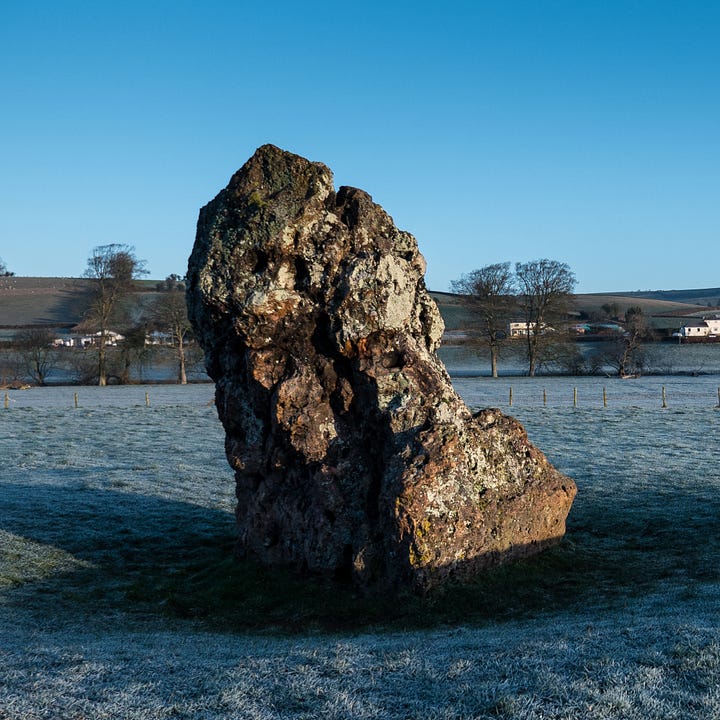
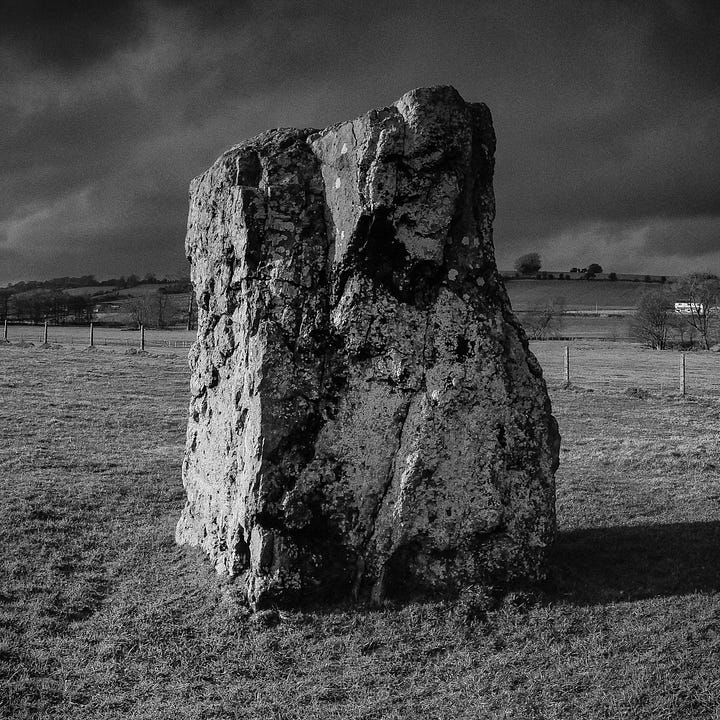
A bit of research revealed they most likely originated in one of the most mysterious places in this area: Harptree Combe slices sharply into the northern flank of the Mendip Plateau a few miles west of Stanton Drew - a narrow, steep-sided defile carpeted in deciduous forest, jungly vegetation and, most interestingly from my point of view, scatterings of odd-shaped boulders! Many of these mossy behemoths were of the same rare dolomitic conglomerate used by the Neolithic builders of Stanton Drew.
Stanton Drew’s 113-metre (370-feet) Great Circle (centre), with Circle 2 upper right. The river flows along the line of the willow trees in the background.
But why? It must be a good four miles from Harptree Combe to Stanton and the rock is incredibly dense and heavy. Was it the scintillating quartz? Or resemblance to Avebury’s sarsens (both types of rock owed their diamond hardness to the interlocking quartz crystals that bound them together).
The key lies at the head of the combe, where an important spring - the ‘Garrowpipe’, the source of Molly Brook, a tributary of the River Chew - bubbles from beneath an immense boulder of…. you’ve guessed it … dolomitic conglomerate.
So the twinkling, red-stained megaliths at Stanton Drew formed a tangible link with the river’s birthplace, high on the Mendip Plateau.
Harptree Combe (Copyright Jenny Morgan 2023)
An even more amazing discovery (for me) was that three of the great Priddy Circles, which regular readers of my Instagram account will know I’m obsessed with, align perfectly with the Garrowpipe Spring. Clearly, both the conglomerate and this spring require further investigation - along with the sources of oolithic limestone the other types of stone used at the site. Expect an update in due course!
Priddy Circles (c.3,000BC) aligned with the Garrowpipe Spring and the head of Harptree Combe, with Chew Valley Lake and, beyond, Stanton Drew village visible in the distance.
With the exception of the one above, the photos in this blog piece are almost prehistoric themselves, taken on old cameras and my very first drone. I’ll shoot a new set sometime, but until then, these should give you an idea of how the place feels and why it deserves a lot more attention than it receives.
Oh: and there’s a decent pub in the village too – the Druid’s Arms – whose garden holds the remnants of a huge chambered tomb, or long barrow, which must - in its time, in the early centuries of fourth millennium, more than a thousand years before the Stanton Drew Circles were erected - have been among the largest in the region.
News!
I’ve the second half of my winter tour coming up. Dates confirmed so far include:
Salisbury, St John’s Place 15th February
Rye (Kent), Community Centre, 22nd February
Hereford, Town Hall, 19th February
Lichfield, The Hub theatre, April 3rd
Tickets may be booked here!
Lots more pending. Keep an eye on this blog and my Instagram (@davidrabram) for new dates in Yorkshire, Durham, the Peak District, Barmouth, Shrewsbury and more.
Thank you for reading to the end of this blog. I hope you enjoyed it . . . If so, please comment and share!

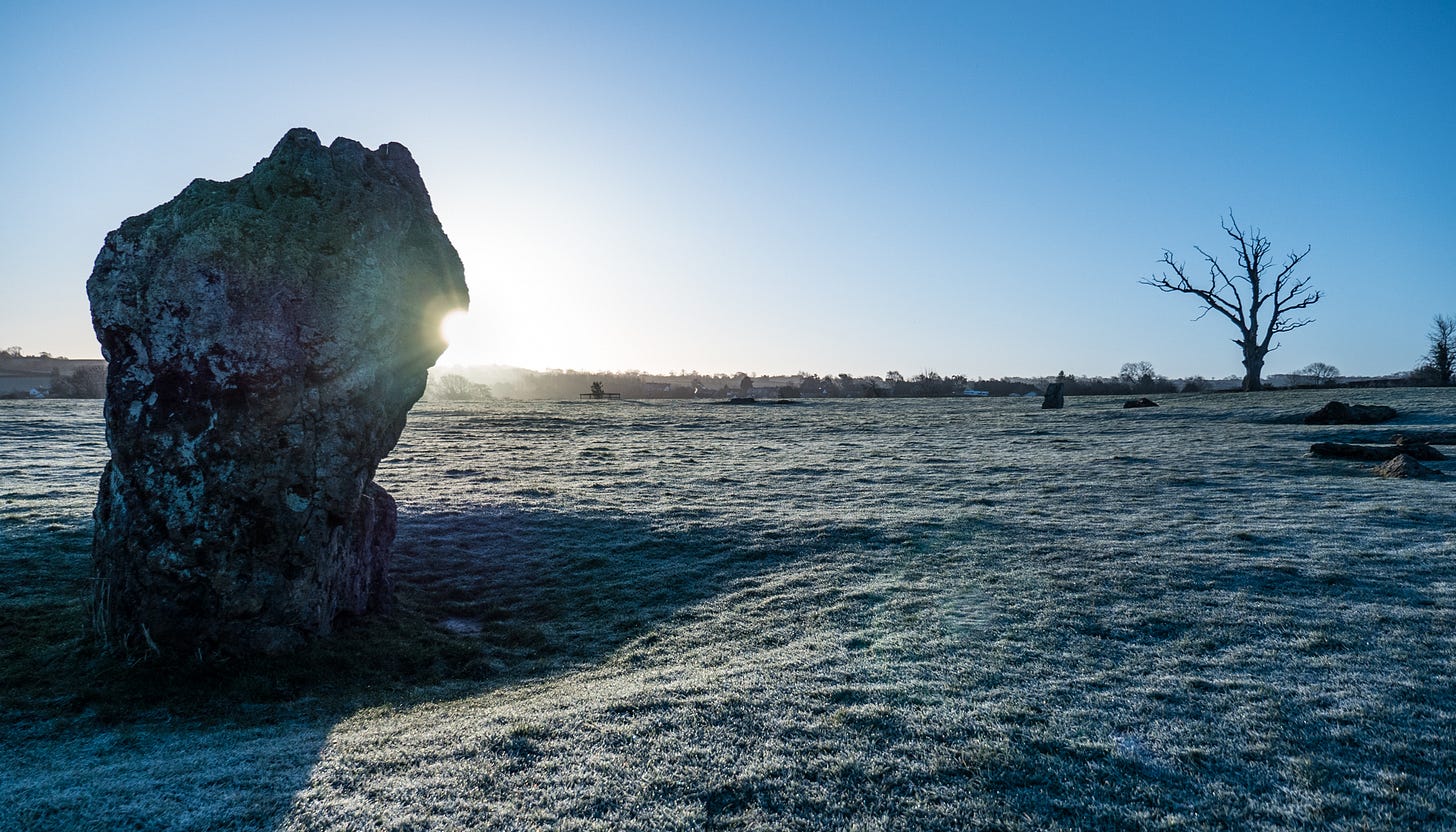
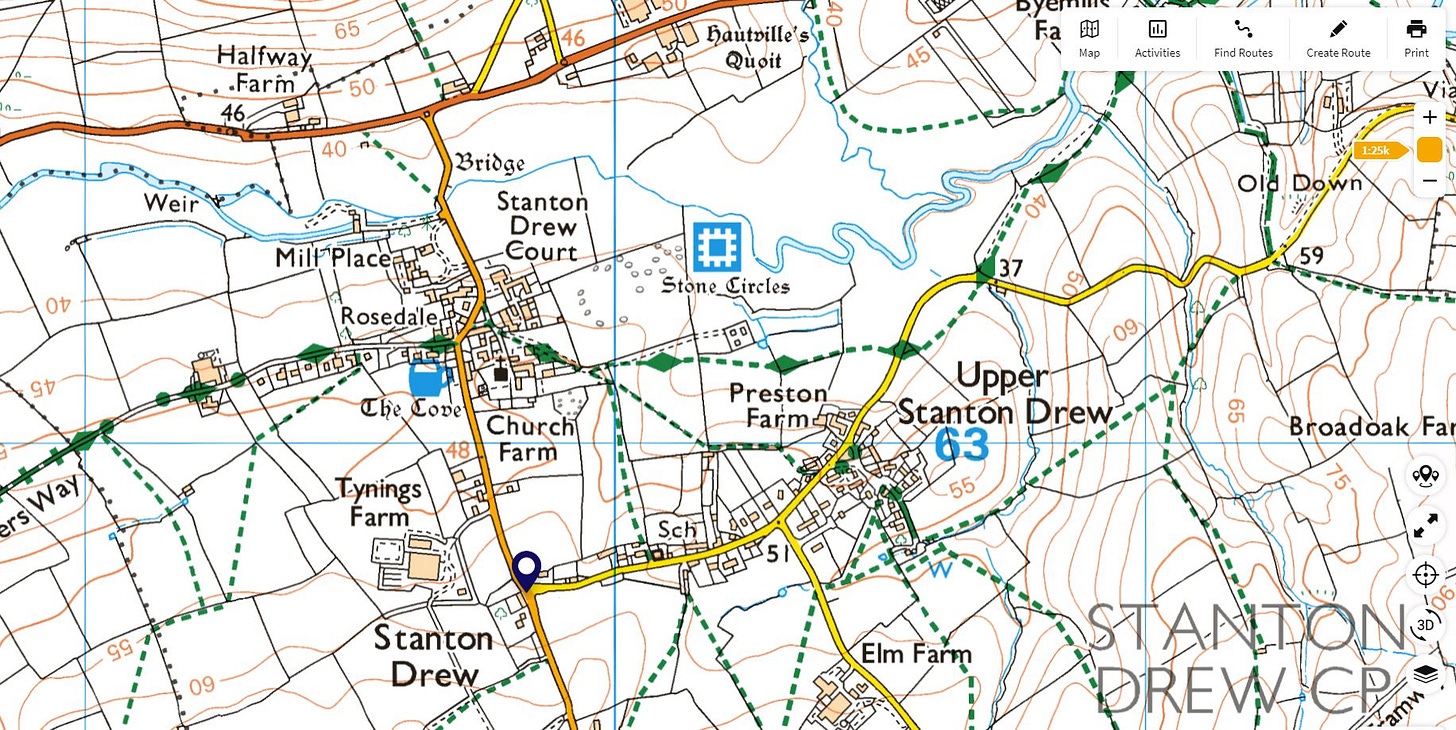
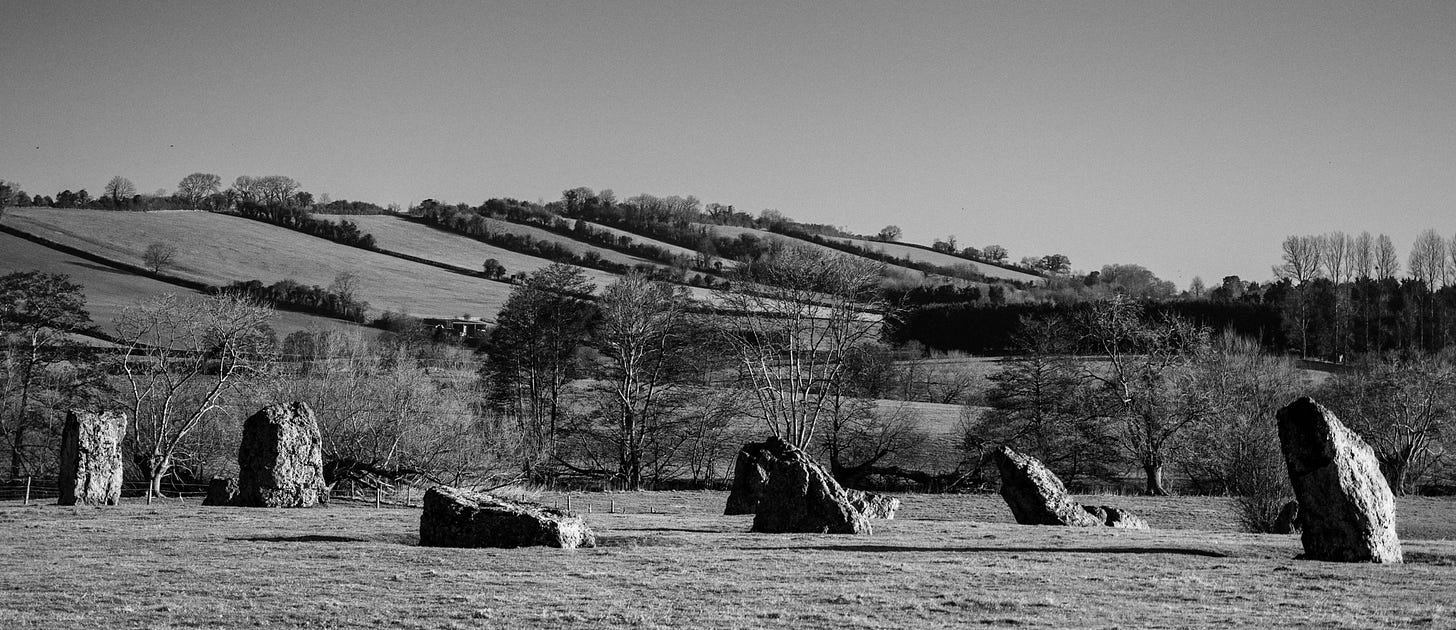
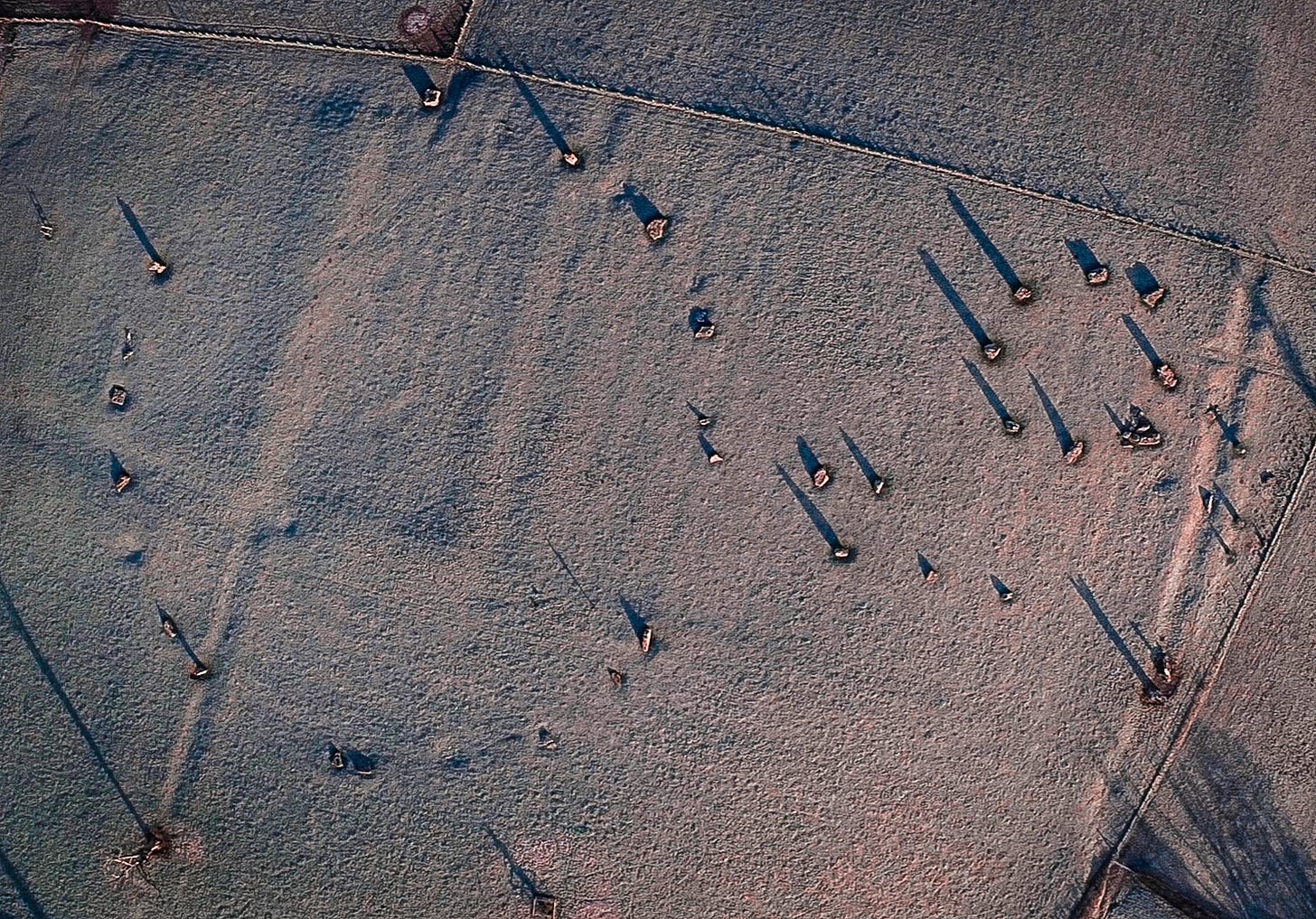
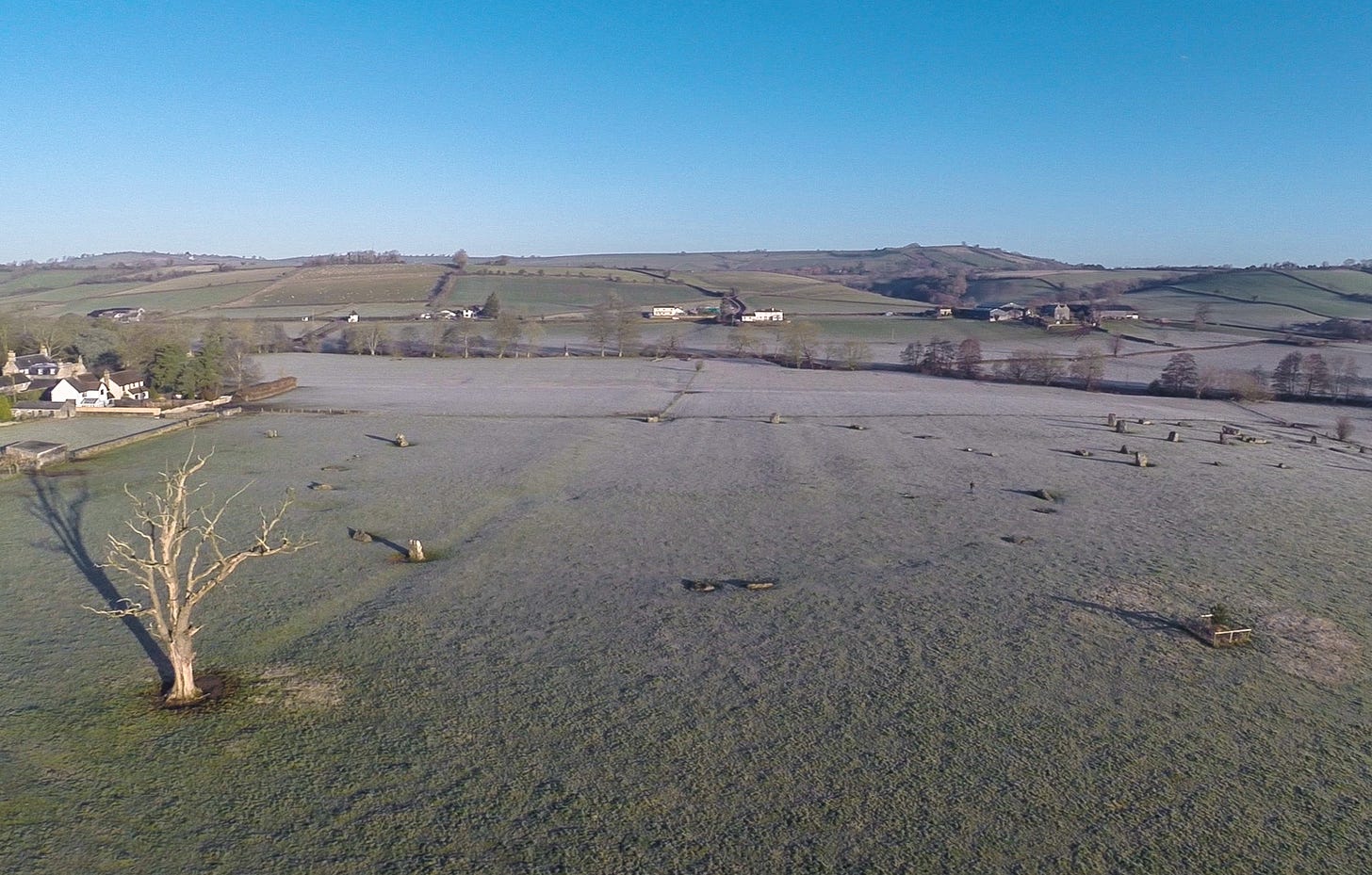
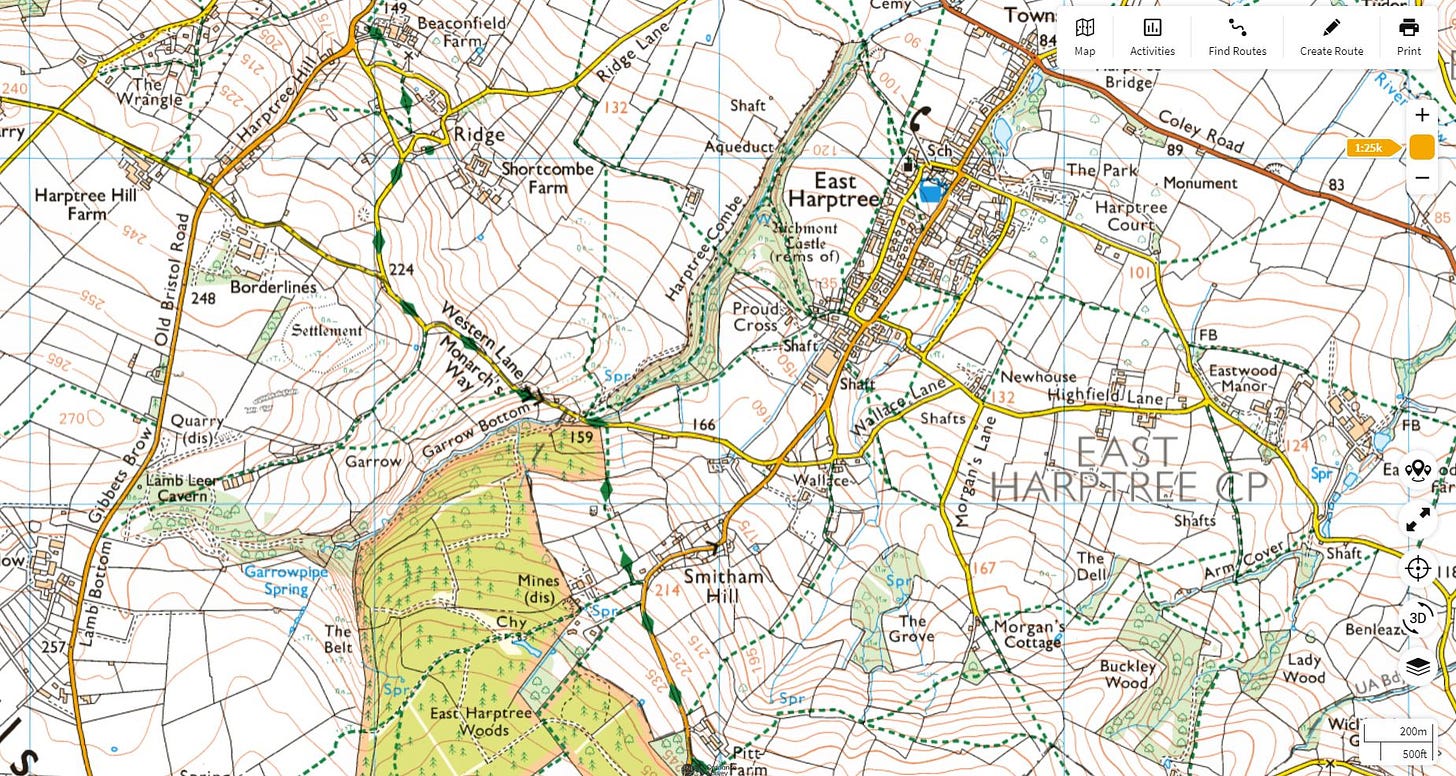
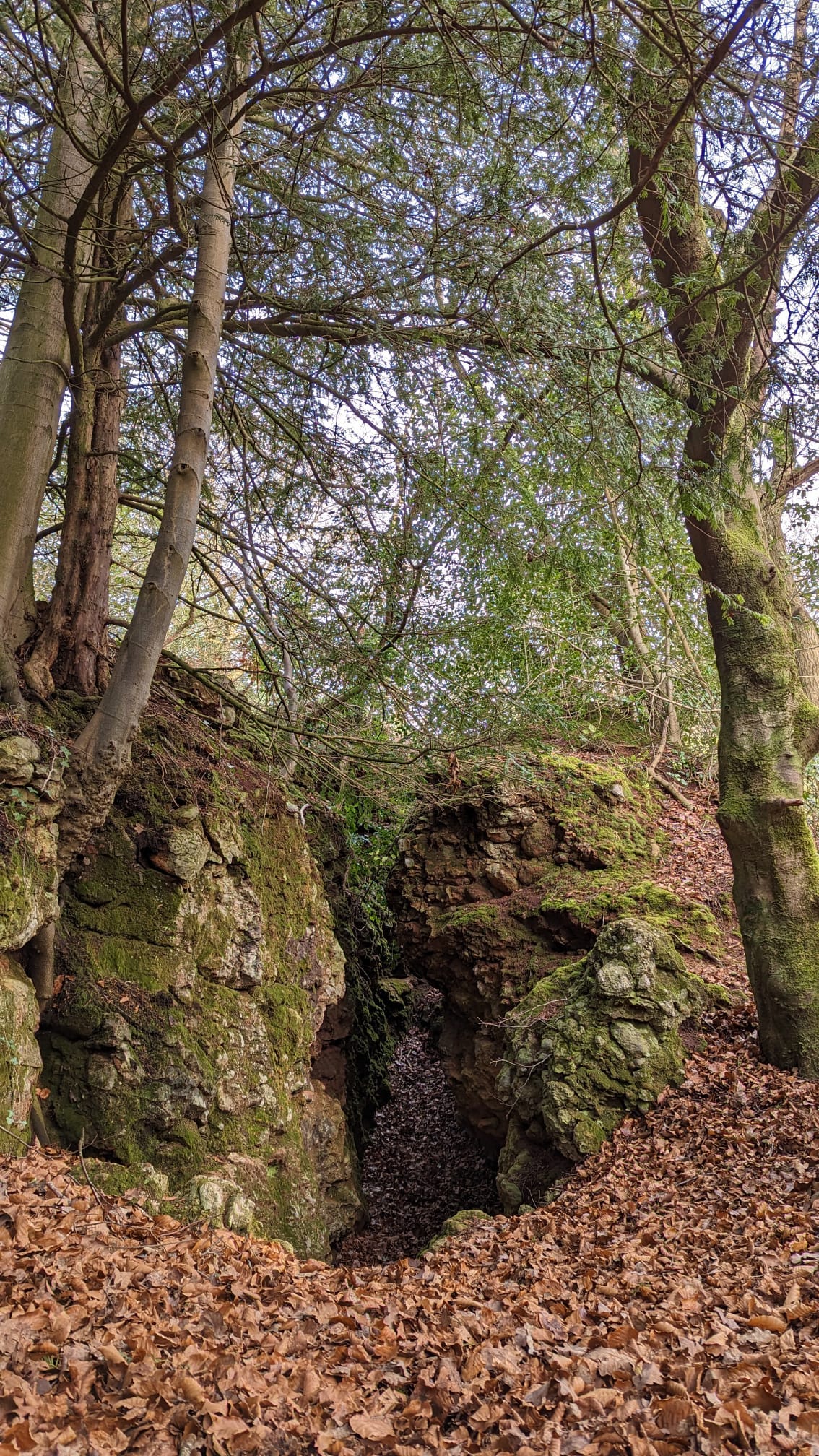
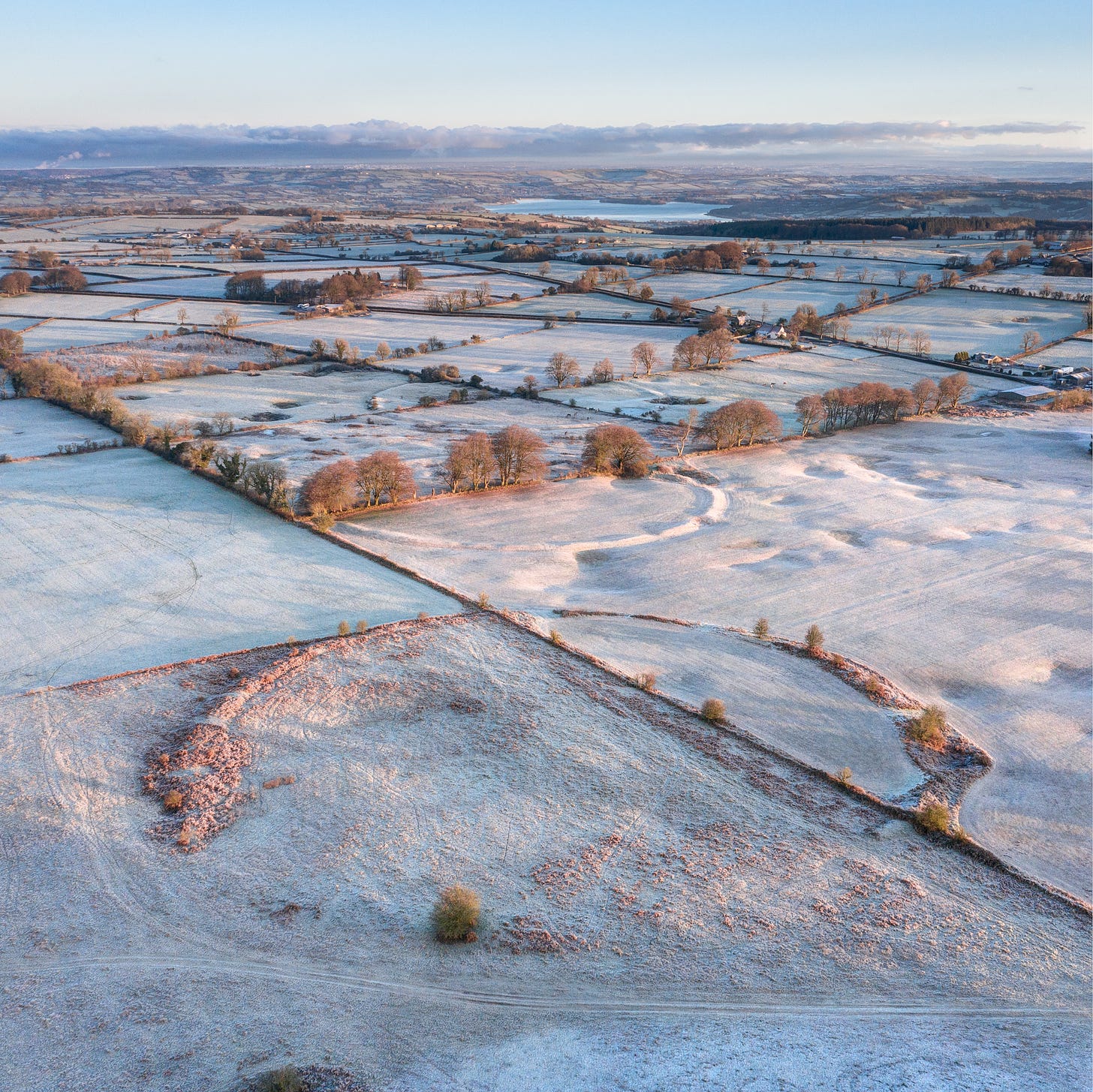
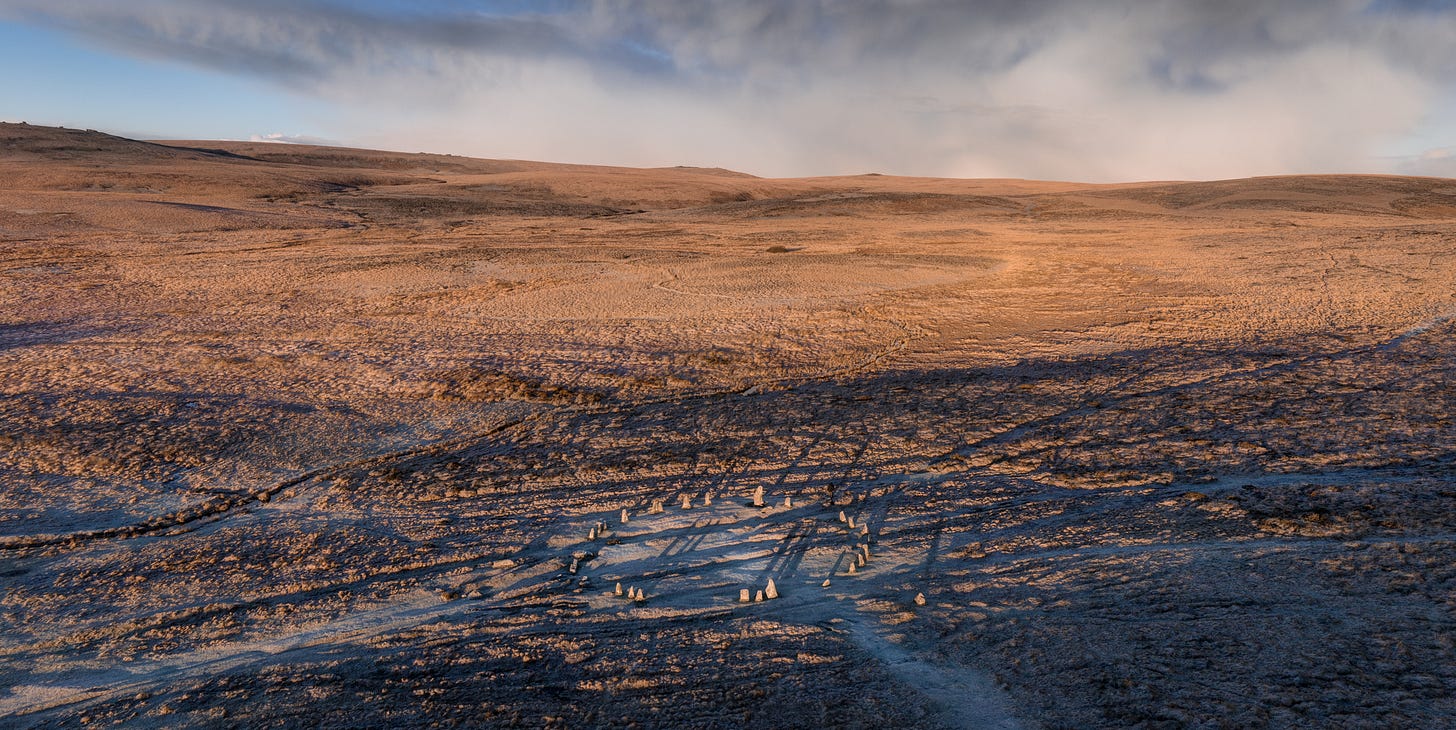
Yes, it’s the quartz.
Visiting Stanton Drew stones tomorrow so this new info is very timely.
Thank you for your accessible and enjoyable information